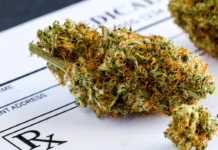CO2 (short for “carbon dioxide”) is an odorless gas present in the air. Over the past few decades, it has become a synonym for car exhausts and climate change. However, nature relies on this molecule to fuel life systems. Similar to humans that depend on oxygen, plants rely on CO2, using this gas for carrying out major physiological functions. Within their growing area, cultivators can manipulate the air by adding more CO2, which results in higher productivity. Let’s discuss all the pros and cons of this procedure with AskGrowers.
Why is CO2 Essential for Cannabis Plants?
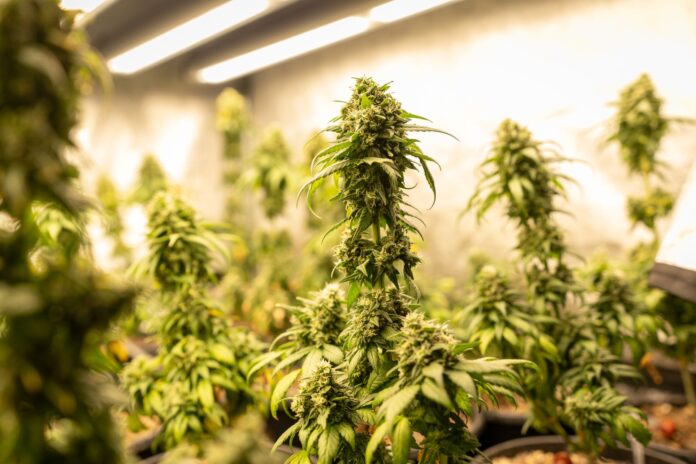
Carbon dioxide is crucial for the growth of all green plants. They use this gas to produce chemical energy from light through photosynthesis. Plants absorb CO2 through the pores under the leaves called stomata. Then, they convert it to sugars, which are used for energy, and oxygen, which is released into the environment. Without enough CO2 in the air, plants can die similar to human beings who utilize oxygen and can perish without it.
Most cultivators focus mainly on the best cannabis seeds, nutrients, lights, soil, and water quality, while CO2 often takes a backseat in importance or gets ignored. If plants don’t get enough CO2, they will continue to grow but their metabolism will decrease resulting in stunted growth. At the same time, too high CO2 levels will also lead to slow growth. So, it is critical to adjust the right level of carbon dioxide to optimize photosynthesis and impact overall quality and production.
How to Use CO2 to Boost your Harvest
By boosting levels of CO2 and light, you can stimulate photosynthesis and increase plant productivity. However, before supplementing with carbon dioxide, make sure that all requirements for growing healthy plants are met. CO2 enrichment for nutrient-hungry or unhealthy plants will be ineffective or even damaging. First, cultivators should optimize their setup (use top-shelf strain genetics, find the best cannabis seeds for sale, choose high-quality nutrients, install powerful lights, ensure proper ventilation, prevent plant pests, etc.) before they introduce their plants to a new environment.
Increasing the CO2 concentration is recommended in an enclosed grow area (a greenhouse or a tent). Don’t neglect the recommendations about installing high-powered grow lights. With a regular lighting level, your cannabis plants “absorb” and “process” all the light at natural levels of carbon dioxide and don’t need more of it. Don’t forget to replace the lamps regularly before they burn out completely. Cannabis plants use the gas only during the light period, and you can stop its supply an hour before the lamps are off.
Keep in mind that too much CO2 is a bad thing and may have a detrimental effect on your marijuana plants. The plants benefit from carbon dioxide supplementation from the time they are seedlings (sprouted from either regular or feminized cannabis seeds), throughout their vegetative growth, and up to their flowering period. Discontinue adding the gas 2-3 weeks before harvest.
How to Increase CO2 Levels
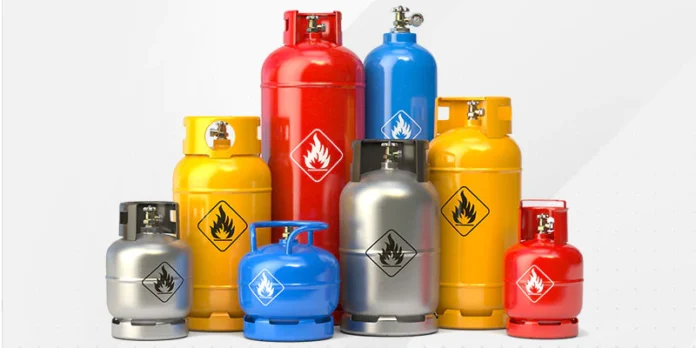
There are numerous carbon dioxide systems to supplement your cannabis plants with CO2, ranging from simple to elaborate. If you have a small personal grow site, make sure that you have a few successful yields under your belt and have mastered the fundamentals of cannabis cultivation before getting into this technical aspect.
There are 2 expensive options to increase CO2 levels:
- Carbon dioxide generator (It looks like a heater and produces CO2 by burning natural gas. It is recommended for large grow sites);
- Compressed CO2 (It is sold in tanks and can be introduced in controlled amounts into the room).
Budget methods of CO2 supplementation include:
- Compost (a smelly and unsanitary way of producing carbon dioxide in small amounts);
- Fermentation (natural fermentation processes of yeast and sugar causing a foul odor);
- Dry ice (frozen CO2 releasing the gas when warming up);
- Homemade solutions (a mix of baking soda and vinegar);
- CO2 bags (fungi that grow on organic matter).
As a heavy gas, carbon dioxide will sink to the floor of the grow room, so it should come from above the plants. Make sure there is adequate air circulation in the room and consider installing fans to disperse the gas higher.
Pros of CO2 Implementation
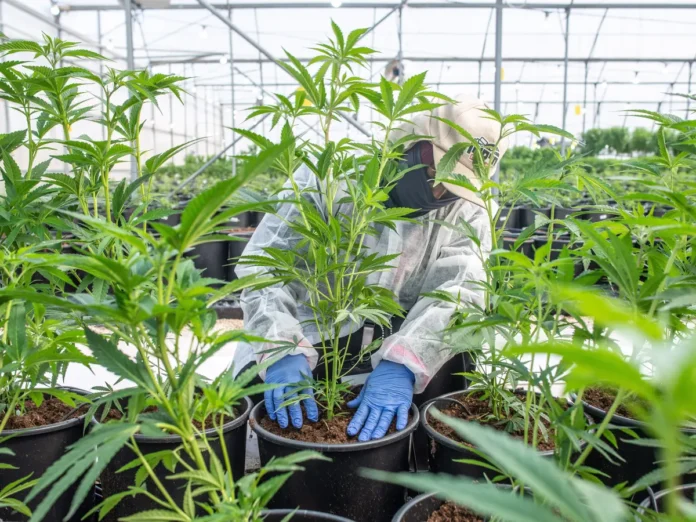
This list shows the benefits of CO2 enrichment:
- Faster growth and higher yields. It is one of the most common reasons for adding this gas to a grow setup. Most growers report a significant increase in the speed of plant maturation and yields. This increase is most notable in the vegetative stage, but some cultivators use CO2 supplementation all the way to harvest. It can reduce the total growing time by a week, without compromising the yields.
- Extra security. Carbon dioxide enrichment should be done in a sealed grow room or CO2 will leak out. It is a bonus because it stops any marijuana odor from venting out. CO2 generators produce a smell on their own and can mask the aroma of blooming cannabis.
- Resistance to higher temperatures. The plants exposed to higher CO2 saturation become able to endure higher growing temperatures (95°F/35°C). They can grow under bright lights that produce more heat than LED lamps.
- Use of HPS grow lights. Adding carbon dioxide works best in a hot grow space with powerful lamps producing a lot of infrared light. Big LEDs give a moderate growth increase, while small LEDs benefit the least from extra CO2.
Cons of CO2 Implementation
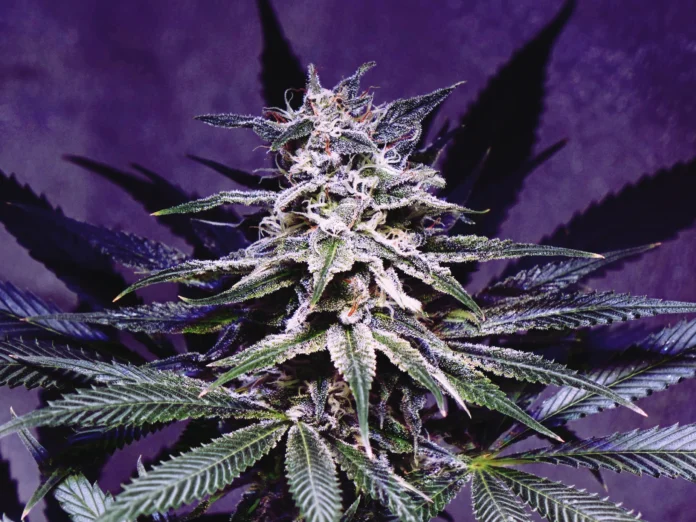
Here are some cons to consider before attempting carbon dioxide supplementation in your garden.
- High cost. Effective CO2 setups are expensive, but using the cheapest methods or investing in poor-quality equipment is a waste of money and time. Though the initial price of a high-grade carbon dioxide setup is high, it will pay off in the long run because of its cost-effective maintenance.
- High humidity. A high humidity level is a side effect associated with sealed grow rooms. The heat increase makes cannabis plants transpire more, leading to possible humidity-related problems, for example, mold. It is important to keep track of humidity levels, ensure proper airflow inside the grow site, or install a dehumidifier.
- Heat needed. Carbon dioxide supplementation won’t be effective in a cold grow room. Cannabis plants need more heat to perform photosynthesis faster (85°F/29°C).
- Low effectiveness of low-power lamps. Cannabis plants need more light for CO2 injection. Anything under 600W/m2 is considered low. You will need HPS, HID, or strong LED bulbs that are powerful enough to deliver good results with CO2.
- Sealed grow space. If you want to maintain high levels of CO2, you need a sealed room to prevent the gas from leaking out. However, adding a little carbon dioxide doesn’t require a sealed environment.
Final Words
Before you start adding CO2, figure out how much money you should invest to provide faster plant growth so that you can decide if it’s worth it in your case. Actually, CO2 supplementation is one of the final steps indoor growers learn to take their cultivation skills to an advanced level. Novice gardeners can buy cannabis seeds with top-strain genetics and grow quality indoor weed without this technology.
By Denys Svirepchuk
Due to a deep interest in cannabis since college, Denys has experience in a broad spectrum of the industry. He focuses on educating readers about the beneficial effects of cannabis and cannabis-related products, conveying complex concepts in simple terms for wider audiences. In his works, he uses arguments that are compelling, clear, and grounded in evidence.



